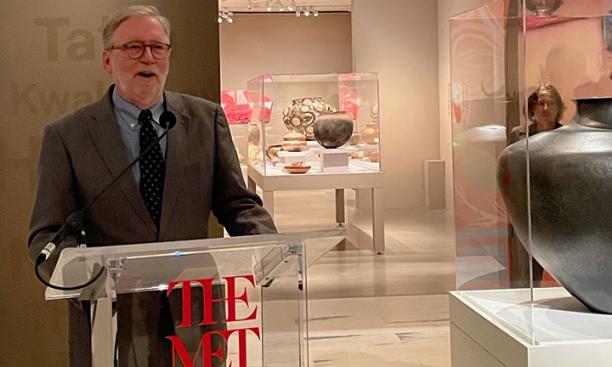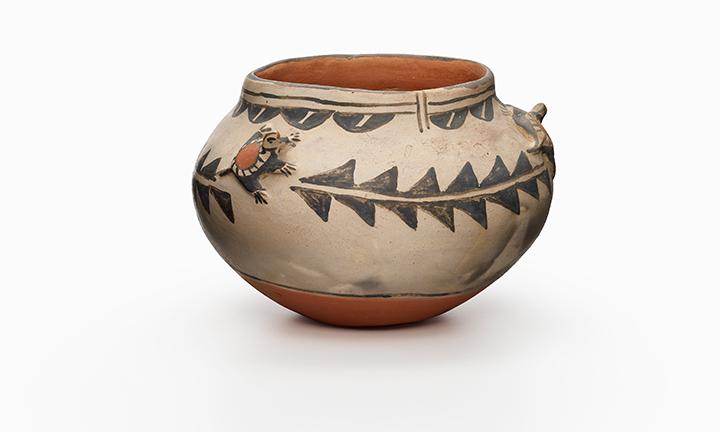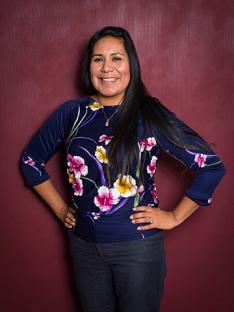
The show aims to convey the meaning of such objects in Pueblo culture. Romero-Briones comes from a family of potters, and their work helped her pay for college. When she was a student at Princeton, she says, “My mother and my grandmother made pots and went to an art show, an Indian market, and they used the money from the pots they sold to buy my clothes and my plane tickets to Princeton. It is an art form that is wholly tied to my community, and in a practical sense it’s the reason I was able to go to Princeton.”
Her story is one of many in the exhibit, “Grounded in Clay: The Spirit of Pueblo Pottery.” Brought to the Met and the Vilcek Foundation in part by Michael F. Brown ’72, president of the School for Advanced Research in Santa Fe, New Mexico, it features about 100 works from Pueblo potters made over the last millennium.
The show will be in New York until June 2024 and then travel to Houston and St. Louis. All of the pieces on display are from SAR’s collection of about 4,000 works of Pueblo pottery. Each of the show’s 60 curators, most of whom are from Pueblo communities, chose one or two objects, often for their emotional resonance.
“The show contains some of the most beautiful Pueblo pots in existence,” Brown said, “but a few show decades of honest wear and were chosen by curators because they evoke memories of the importance of pottery in their spiritual and home lives.”

After Brown’s freshman year, Ortiz recruited him and other students to work at a school in the Navajo Nation in Arizona, where Brown spent a second summer followed by a third in a Navajo community in Ramah, New Mexico. He went on to do graduate work at the University of Michigan, where he came to focus on Peru as his area of academic study, and then was hired at Williams, but he retained an affinity for the Southwest and spent more than a year as a visiting scholar at SAR.
Six of the exhibit’s curators are relatives of Romero-Briones, who is director of programs for Native agriculture and food systems at the First Nations Development Institute. When she was a child, she says, her grandmother would give her clay teacups that she’d made but wasn’t happy with or whose handles had fallen off. “I cherish those pieces that I have from her,” Romero-Briones says.
Despite their beauty, Pueblo pots are practical objects. “They’re pots, and they’re not meant to last forever,” Romero-Briones says. “You know you’re creating something that’s meant to return to the earth, and there’s something very beautiful in that.”

